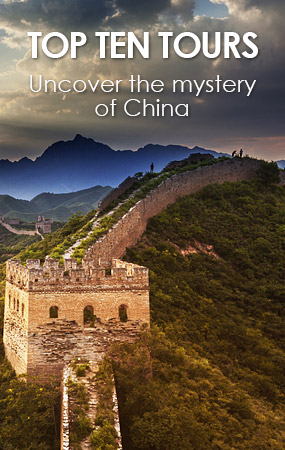History of Beijing
Beijing was the capital city China during the Liao (916-1125), Jin (1115-1234), Yuan (1271-1368), Ming (1368-1644) and Qing (1644-1911) dynasties and is one of the four ancient capitals of China together with Xian, Luoyang and Nanjing. The history of Beijing could be traced back to 500,000 years ago to the first existence of humans in this area.
Peking man in Zhoukoudian - the ancient times
Evidence of our human ancestry dating back to 500,000 years ago has been found in such places as Zhoukoudian in the southwest part of Beijing, where the remains known as 'Peking Man' were found.
Ji City- Zhuo Shire - Youzhou (Western Zhou Dynasty- Sui Dynasty- Tang Dynasty)
Beijing was built as early as 3,000 years ago and rebuilt and named Ji City in the Western Zhou Dynasty (11th century BC - 771 BC). Emperor Qin united China in 221 BC and built roads which connect Ji City with Xianyang - the capital during the Qin Dynasty. Ji City became the trading center and militarily strategic place in Northern China since that time. The name Ji City was used until the Sui Dynasty (581-618) when it was renamed Zhuo shire and You Zhou in Tang Dynasty (618-907).
Yanjing – Zhongdu – Dadu (Liao Dynasty – Jin Dynasty – Yuan Dynasty)
The minority ethnic group Qidan occupied You Zhou and built Liao Dynasty (916-1125). You Zhou was called Yanjing at that time.
Early in the 12th century, another minority ethnic group Nvzhen founded the Jin Dynasty (1115-1234), with its capital in Yanjing and renamed it Zhongdu.
During Jin Dynasty, the city was rebuilt on a scale similar to the Northern Song (960-1127) capital at Bianliang and expanded to the east, west and south. The new expanded city, with its splendid buildings in the center, measured roughly five kilometers in circumference, which forms the layout of Beijing we see today.
During Liao and Jin Dynasty, Beijing has become a truly significant capital.
Mongol armies occupied Zhongdu in 1215 and in 1271, the Mongols finally eliminated the Southern Song and unified China to build Yuan Dynasty. The leader of the Mongolian ethnic minority Kublai Khan established its capital in Yanjing and renamed it Dadu. Dadu became the political center of the country for the first time in history.
The magnificent palaces of the Jin capital, Zhongdu, were destroyed by fire during the dynastic turnover from Jin to Yuan. The emperor Kublai Khan ordered a new city to be built. The reconstruction lasted for 26 years and the original site of Zhongdu was replaced by a larger rectangular area centered in a beautiful lake region in the northeast suburbs of Zhongdu. The envoys and traders from Europe, Asia and Africa were astounded by the splendor and magnificence of Dadu and Dadu was famed as one of the most beautiful cities in the world at that time.
Beijing (Ming Dynasty – Qing Dynasty - the People's Republic of China)
In 1368, Ming troops seized Dadu and renamed it Beiping (Northern Peace). In 1403, Emperor Zhu Di named Beiping as the capital and renamed it Beijing.
Extensive reconstruction work was carried out in Beijing during the first years of the Ming Dynasty. The most significant part of the reconstruction was to build an Inner City that was to serve as the capital of the Chinese empire and symbolize the supreme royalty. Designed with thousands of halls and gates arranged symmetrically around the north–south axis, the Inner City constructed in the Ming Dynasty is the Forbidden City at present in Beijing. Its dimensions and luxuriance are a fitting symbol of the power and greatness of these royal families.
When the Manchus founded the Qing Dynasty in 1644, they also named Beijing as the capital and began to build royal gardens in western suburbs. The Summer Palace, Old Summer Palace and many other gardens were built at that time.
After the collapse of the Qing Dynasty in 1911, China fell prey to the Northern Warlords and Kuomintang. It wasn't until October 1st, 1949 that the People's Republic of China was founded with Beijing as its capital.

